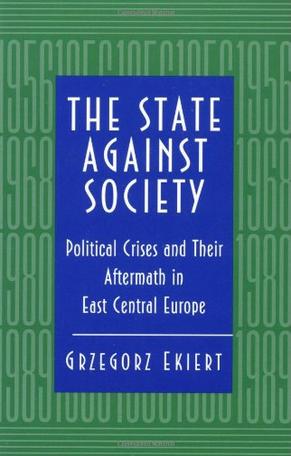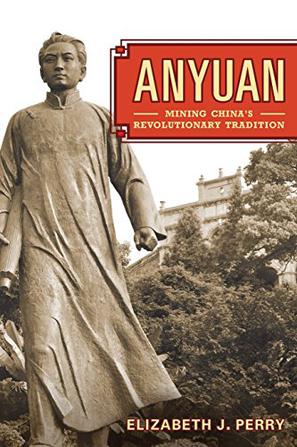-

Strangers at the Gates
This book contains the products of work carried out over four decades of research in Italy, France and the United States, and in the intellectual territory between social movements, comparative politics, and historical sociology. Using a variety of methods ranging from statistical analysis to historical case studies to linguistic analysis, the book centers on historical catalogs of protest events and cycles of collective action. Sidney Tarrow places social movements in the broader arena of contentious politics, in relation to states, political parties and other actors. From peasants and communists in 1960s Italy, to movements and politics in contemporary western polities, to the global justice movement in the new century, the book argues that contentious actors are neither outside of nor completely within politics, but rather they occupy the uncertain territory between total opposition and integration into policy. -

The State against Society
Classical images of state-socialism developed in contemporary social sciences were founded on simple presuppositions. State-socialist regimes were considered to be politically stable due to their pervasive institutional and ideological control over the everyday lives of their citizens, impervious to reform and change, and representative of extreme political and economic dependency. Despite their contrasting historical experiences, they have been treated as basically identical in their institutional design, social and economic structures, and policies. Grzegorz Ekiert challenges this notion in a comparative analysis of the major political crises in post-1945 East Central Europe: Hungary (1956-63), Czechoslovakia (1968-76), and Poland (1980-89). The author maintains that the nature and consequences of these crises can better explain the distinctive experiences of East Central European countries under communist rule than can the formal characteristics of their political and economic systems or their politically dependent status. He explores how political crises reshaped party-state institutions, redefined relations between party and state institutions, altered the relationship between the state and various groups and organizations within society, and modified the political practices of these regimes. He shows how these events transformed cultural categories, produced collective memories, and imposed long-lasting constraints on mass political behavior and the policy choices of ruling elites. These crises shaped the political evolution of the region, produced important cross-national differences among state-socialist regimes, and contributed to the distinctive patterns of their collapse. -

China's Embedded Activism
In recent years China has been remarkable in achieving extraordinary economic transformation, yet without fundamental political change. To many observers this would seem to imply a weakness in Chinese civil society. However, though the idea of democracy as multitudes of citizens taking to the streets may be attractive, it is simultaneously misleading as it disregards the nature of political change taking place in China today: a gradual shift towards a polity adapted to a pluralist society. At the same time, one may wonder what the limited political space implies for the development of a social movement in China. This book explores this question by focusing on one of the most active areas of Chinese civil society: the environment. China’s Embedded Activism argues that China’s semi-authoritarian limitations on the freedom of association and speech, coupled with increased social spaces for civic action has created a milieu in which activism occurs in an embedded fashion. The semi-authoritarian atmosphere is restrictive of, but paradoxically, also conducive to nationwide, collective action with less risk of social instability and repression at the hand of the governing elite. Rich in case studies about environmental civic organizations in China, and written by a team of international experts on social movements, NGOs, democratization, and civil society, this book addresses a wide readership of students, scholars and professionals interested in development, geography and environment, political change, and contemporary Chinese society -

Why Men Rebel
-

Collective Resistance in China
Although academics have paid much attention to contentious politics in China and elsewhere, research on the outcomes of social protests, both direct and indirect, in non-democracies is still limited. In this new work, Yongshun Cai combines original fieldwork with secondary sources to examine how social protest has become a viable method of resistance in China and, more importantly, why some collective actions succeed while others fail. Cai looks at the collective resistance of a range of social groups—peasants to workers to homeowners—and explores the outcomes of social protests in China by adopting an analytical framework that operationalizes the forcefulness of protestor action and the cost-benefit calculations of the government. He shows that a protesting group's ability to create and exploit the divide within the state, mobilize participants, or gain extra support directly affects the outcome of its collective action. Moreover, by exploring the government's response to social protests, the book addresses the resilience of the Chinese political system and its implications for social and political developments in China. -

Anyuan
How do we explain the surprising trajectory of the Chinese Communist revolution? Why has it taken such a different route from its Russian prototype? An answer, Elizabeth Perry suggests, lies in the Chinese Communists' creative development and deployment of cultural resources - during their revolutionary rise to power and afterwards. Skillful "cultural positioning" and "cultural patronage," on the part of Mao Zedong, his comrades and successors, helped to construct a polity in which a once alien Communist system came to be accepted as familiarly "Chinese." Perry traces this process through a case study of the Anyuan coal mine, a place where Mao and other early leaders of the Chinese Communist Party mobilized an influential labor movement at the beginning of their revolution, and whose history later became a touchstone of "political correctness" in the People's Republic of China. Once known as "China's Little Moscow," Anyuan came over time to symbolize a distinctively Chinese revolutionary tradition. Yet the meanings of that tradition remain highly contested, as contemporary Chinese debate their revolutionary past in search of a new political future.